
PPT Total Participation Techniques PowerPoint Presentation, free download ID2113853
The authors provide detailed descriptions of the Total Participation Techniques (TPTs) with step-by-step instructions--plus reproducible blackline masters for student response cards as well as posters to remind you to use the techniques. They also suggest how you can adapt and personalize the techniques to fit your context and content.

PPT Total Participation Techniques PowerPoint Presentation ID2113853
The authors provide detailed descriptions of the Total Participation Techniques (TPTs) with step-by-step instructions--plus reproducible blackline masters for student response cards as well as posters to remind you to use the techniques. They also suggest how you can adapt and personalize the techniques to fit your context and content.
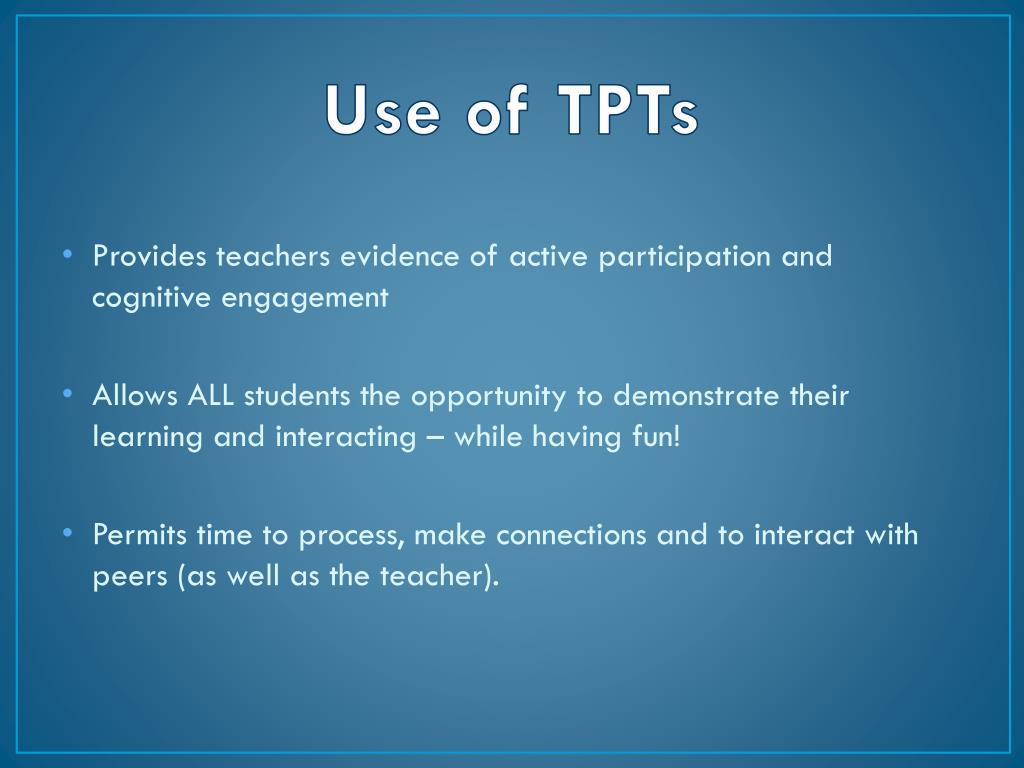
PPT Total Participation Techniques PowerPoint Presentation, free download ID6582276
The authors provide detailed descriptions of the Total Participation Techniques (TPTs) with step-by-step instructions--plus reproducible blackline masters for student response cards as well as posters to remind you to use the techniques. They also suggest how you can adapt and personalize the techniques to fit your context and content.
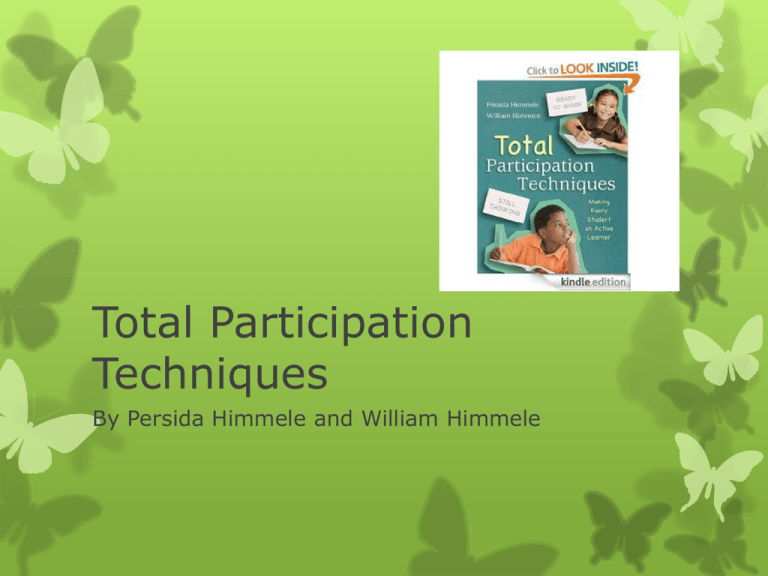
Total Participation Techniques
Total Participation Techniques > Getting Started > Course Syllabus Total Participation Techniques Typical question and answer sessions allow students to tune out important classroom interactions, and traditional lectures leave most students functioning as 'listening objects.' To truly engage

Total Participation Techniques presents dozens of ways to engage K 12 students in active
2) Quick Writes. How it works: Select a prompt that you would like students to address. Give students a specified amount of time to collect their thoughts and jot down a response (3-5 minutes). Follow this up with a Pair-Share, Networking Session, or Chalkboard Splash. How to Ensure Higher-Order Thinking.

11 Total Participation Techniques That Involve Movement
Total Participation Techniques. About "Why are we still doing that?" "A masterful combination of the 'why' and 'how' of replacing ineffective teaching with research- proven techniques." —Philip Bassett, PhD, former director of teacher training, International Schools Consortium.

Total Participation Techniques to Engage Students Quick Reference Guide Nelson
Why Total Participation Techniques. "Total Participation Techniques (TPTs) are teaching techniques that provide teachers with evidence of cognitive engagement and active participation from all students at the same time. The technique counters teacher bias and helps ensure equity in participation.". Himmele, P., & Himmele, W. (2017, 2nd.

Total Participation Techniques (eBook) Teacher books, Instructional coaching, Teaching
She and her husband William coauthored the ASCD bestselling book- Total Participation Techniques: Making every student an active learner, as well as several other books, including The Language-Rich Classroom: A research-based framework for teaching English language learners. They regularly conduct workshops on Total Participation Techniques.
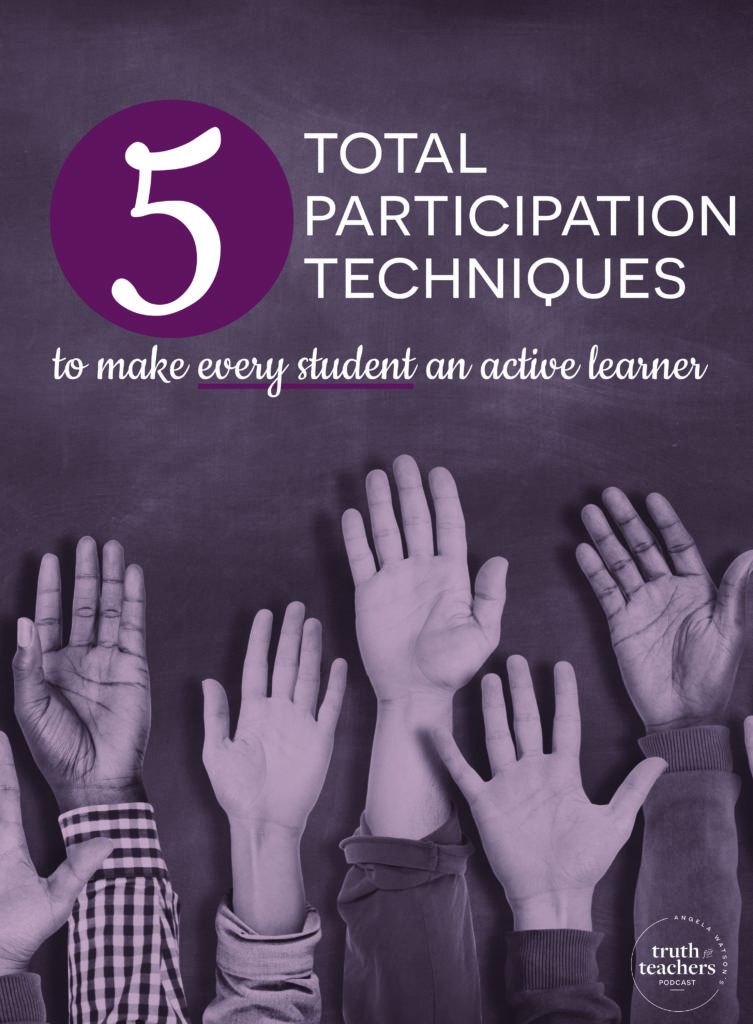
5 total participation techniques to make every student an active learner
Wrap-ups: 1, 2, 3 O'Clock. The wrap-ups chapter of the Total Participation Techniques book has techniques that allow students to sum and reflect on the most essential components of what they've learned. One example is called the 1, 2, 3 o'clock. Students use their "Appointment Agenda" to gather appointments.
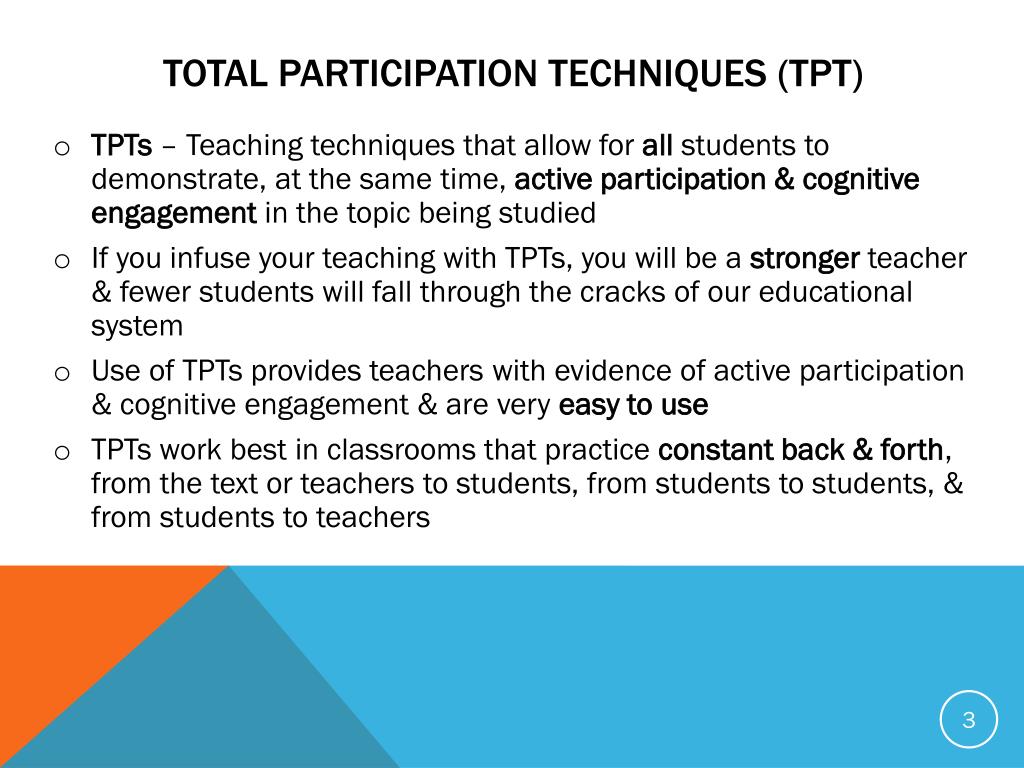
PPT TOTAL PARTICIPATION TECHNIQUES chapters 1 3 PowerPoint Presentation ID6548906
He and his wife, Pérsida, are the authors of several books, articles, and resources, including the ASCD bestselling book, Total Participation Techniques: Making every student an active learner, as well as the accompanying video. They have also written five additional books, including the ASCD books, The Language-Rich Classroom: A research.
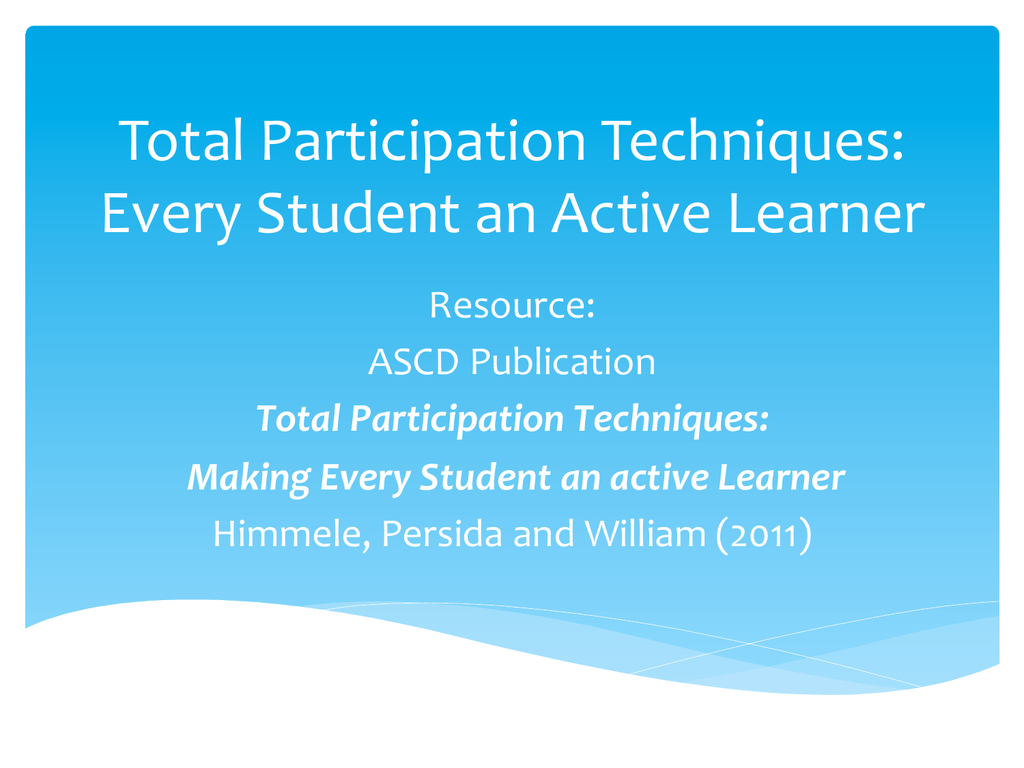
Total Participation Technique Slides
Total Participation Techniques to Engage Students is an essential guide for teachers at all levels who want to ensure that their lessons are relevant, engaging, and challenging for the whole class. Authors Pérsida and William Himmele explain the guiding principles of Total Participation Techniques (TPTs) and how to effectively use them in the.

PPT Total Participation Techniques PowerPoint Presentation, free download ID2113853
The authors provide detailed descriptions of the Total Participation Techniques (TPTs) with step-by-step instructions—plus reproducible blackline masters for student response cards as well as posters to remind you to use the techniques. They also suggest how you can adapt and personalize the techniques to fit your context and content.

Total Participation Techniques About Us Teaching strategies, Pedagogy, Participation
Total Participation Techniques: Making Every Student an Active Learner, 2nd Edition. For 100 or more copies of a single title call 1-800-933-2723 x5773 or dial direct 1-703-575-5773. Here are 51 easy-to-use, classroom-tested alternatives to the "stand and deliver" teaching techniques that cause so many students to tune out or drop out. Teachers.

PPT Total Participation Techniques PowerPoint Presentation, free download ID6582276
Free Shipping Available. Buy Total Participation Techniques on ebay. Money Back Guarantee!
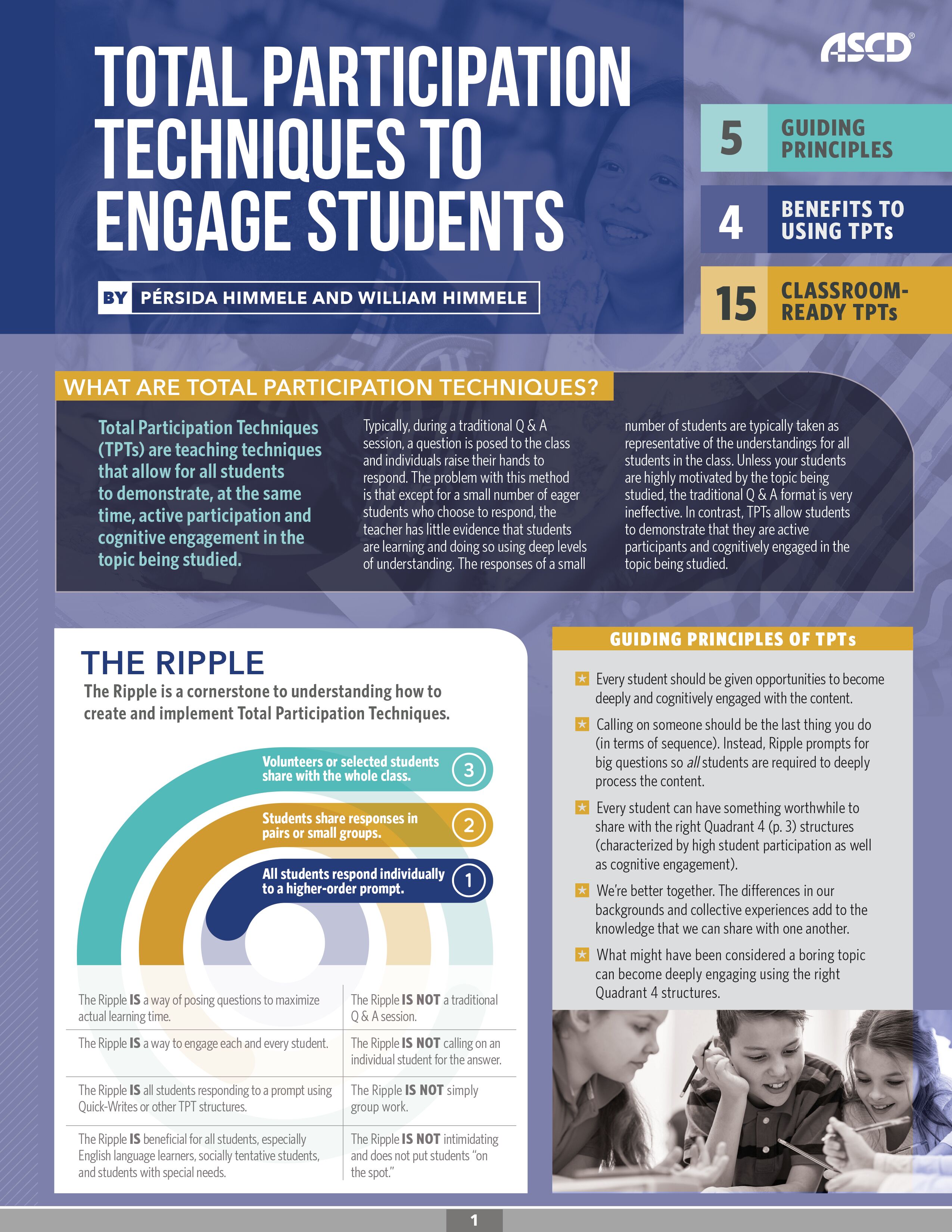
total participation techniques pdf oceanresinarttutorialcoaster
A Total Participation Technique is a teaching technique that allows a teacher to get evidence of active participation and cognitive engagement from all students at the same time. Higher-order, or.

PPT Total Participation Techniques PowerPoint Presentation ID3151629
Total Participation Techniques (TPTs) are teaching techniques that provide teachers with evidence of cognitive engagement and active participation from all students at the same time (Himmele & Himmele, 2011). The three key phrases in that sentence have been italicized. They are Evidence, Cognitive Engagement (using higher-order thinking), and.